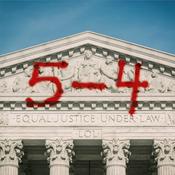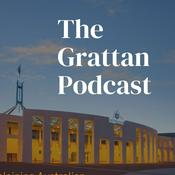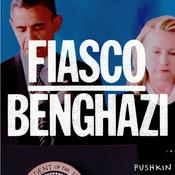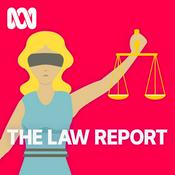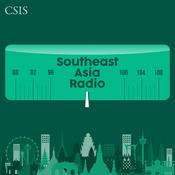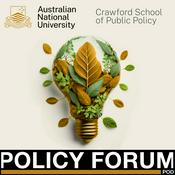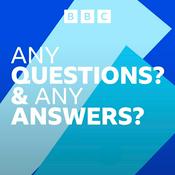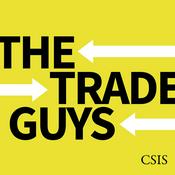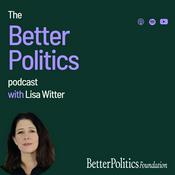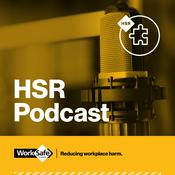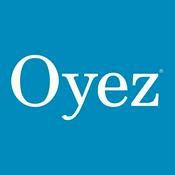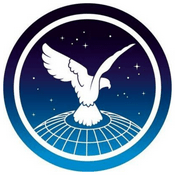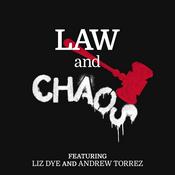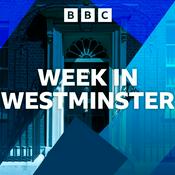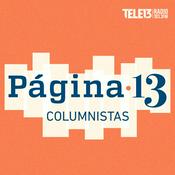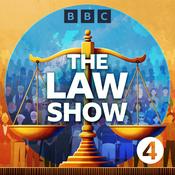3 episodes

MAGA, Billionaires & The Vatican: Is There a Shadow Alliance Shaping Global Power?
02/05/2025 | 1h 9 mins.
When I stumbled across the connections between Peter Thiel, the PayPal Mafia, and the Vatican, I was bewildered. It felt like discovering a secret society lurking in the shadows of global politics. What appeared to be a simple exploration of religious influence rapidly transformed into an inquiry that unearthed an ambitious and potentially dangerous agenda. In this post, I’ll guide you through how the unassuming Vatican could be wielding power far beyond what meets the eye—complete with firsthand insights and surprising revelations along the way.Unveiling the Vatican's Diplomatic EmpireHave you ever thought about the Vatican's role in global diplomacy? You might be surprised to learn that this tiny state has an extensive diplomatic reach, boasting 184 diplomatic missions worldwide. That's right! The Vatican operates more diplomatic outposts than the United States, which has 168. This fact alone raises many questions about the Vatican's influence on international affairs.A Surprising Diplomatic Mission CountWhen we talk about diplomacy, we often think of the big players: the United States, Russia, or China. Yet, here we have the world's smallest independent state, the Vatican, outpacing even these global powers in terms of diplomatic presence. Isn't that fascinating?* The Vatican: 184 diplomatic missions* The United States: 168 diplomatic missionsWhy does this matter? It highlights the Vatican's unique position in global diplomacy. The Vatican is not just a religious entity; it's a player on the world stage. Its extensive network allows it to engage with various countries, facilitating dialogue on critical issues. From climate change to international peace efforts, the Vatican often serves as a bridge between conflicting parties.Comparison with Major Global PowersLet’s break this down a bit more. The diplomatic clout of the Vatican is remarkable when compared to major global powers. While countries like the U.S. use their might to project power, the Vatican operates differently. It leverages moral authority rather than military strength. This is a crucial distinction!Consider this: The Vatican’s diplomatic missions are often cloaked in religious activity. But underneath, they function as a sophisticated intelligence network. They gather information that helps the Vatican understand global political landscapes. For example, when Pope Francis brokered peace between the United States and Cuba, he was armed with detailed intelligence. This allowed him to intervene decisively. It’s intriguing to think about how this network functions.The Vatican's Unique Position in Global DiplomacyThe implications of the Vatican's reach are profound. How does a religious institution wield such power? It operates under the protections of freedom of worship and international law. This gives it a legitimate cover for influence operations, which can be both enlightening and alarming.“The world's smallest independent state has more diplomatic outposts than the world's most powerful nation.”This quote hits at the heart of the matter. The Vatican's influence is significant, especially when you consider its ability to navigate complex political issues. It plays a unique role that allows it to foster dialogue in ways that other nations cannot. Isn’t it ironic that a religious institution can be an influential player in global governance?But with great power comes great responsibility. The Vatican's diplomatic activities raise questions about the intersection of faith and politics. Can a religious entity truly act in the best interest of all? Or does its agenda sometimes align more closely with specific political ideologies?As we unpack this hidden empire of influence, it becomes clear that the Vatican is not just a relic of history. Instead, it is actively shaping modern geopolitics. This reality compels us to reconsider the role of religion in global affairs. It pushes us to ask difficult questions about power, influence, and moral authority.In exploring the Vatican's diplomatic empire, we uncover a complex web of relationships, motivations, and objectives. This tiny state is wielding its influence in ways we might not fully understand. Yet, it’s crucial to recognize its impact on a global scale. The Vatican stands as a testament to the idea that diplomacy can come from unexpected places. Who would have thought that a small city-state could outmaneuver larger nations in the realm of diplomacy?The Church as an Information NetworkHave you ever thought about how the Catholic Church operates as an intelligence structure? It’s fascinating to see how this ancient institution has evolved into a sophisticated network that gathers and analyzes information. Let’s dive into this topic and explore how local parishes play a crucial role in this process.1. The Intelligence Structure of the Catholic ChurchThe Catholic Church is not just a place of worship; it is a well-organized system that collects vast amounts of information. The hierarchical structure, with the Pope at the top, allows for efficient communication and information flow from local parishes to global leadership. This structure acts like a funnel, gathering insights from the grassroots levels of the church and synthesizing them for higher decision-makers.* Local Insight: Priests are often the first to collect ground-level insights during regular services.* Synthesis: This information is then synthesized from local to global levels, making it possible for the Vatican to understand various political and social conditions worldwide.For instance, when Pope Francis needed to broker negotiations, he had comprehensive intelligence from both sides. This access to information is a unique advantage compared to traditional intelligence agencies.2. The Role of Local ParishesLocal parishes serve as the eyes and ears of the Church. They provide crucial insights into the needs and concerns of their communities. This information is vital for the Vatican to make informed decisions. Think about it: who better to understand the local context than the priests who serve there?During services, priests can gauge the mood of their congregation. They hear about issues affecting families, such as economic challenges, health concerns, and social injustices. This ground-level data can influence church policy and responses to global events.Moreover, local parishes create a network of communication. They connect with each other and share insights, which then travel up the hierarchy. It’s like a game of telephone, but instead of whispering secrets, they’re sharing vital information that can help shape the Church’s stance on important issues.3. Case Study: Vatican's Role in U.S.-Cuba RelationsA striking example of the Church's intelligence network in action is its role in U.S.-Cuba relations. During a time of strained diplomatic ties, the Vatican played a pivotal role in brokering a historic agreement. The Church's ability to gather insights from both sides allowed Pope Francis to act as a mediator effectively.By understanding the concerns and aspirations of both the U.S. and Cuban governments, the Vatican facilitated dialogue that led to significant changes. This instance highlights how the Church can leverage its intelligence capabilities in the realm of international relations. It’s not just about faith; it’s about influence and diplomacy.4. The Implications of Church IntelligenceThe implications of this intelligence network are profound. The Church operates with a unique advantage; it enjoys protections under freedom of worship and international law. This means its intelligence operations can be more discreet compared to agencies like the CIA.However, this raises questions: how can information gathered for spiritual purposes influence political stances? What happens when the Church’s insights are used to shape policy on pressing global issues, such as climate change or immigration?As we navigate these complexities, it’s crucial to remain aware of the Church's dual role as a spiritual leader and an intelligence network. Understanding this dynamic can help us grasp the broader implications for both faith and governance.In our exploration of the Church as an information network, we see how it operates behind the scenes. This often unnoticed role gives the Church a unique position in global affairs, influencing not just its followers but the world at large. The Church's intelligence capabilities reveal a fascinating intersection of faith and politics that warrants our attention.The Dark Side of the Vatican's InfluenceLet’s dive into a topic that many might find unsettling—the complex, often shadowy influence of the Vatican. I mean, the church is not just about faith and community; it has a powerful information network that has been misused historically. Yes, I’m talking about the infamous rat lines, which were routes that facilitated the escape of Nazi war criminals after World War II. These were not just isolated incidents; they represent a long history of the church leveraging its connections for dubious purposes.Historical Misuse of the Information NetworkHave you ever wondered how the Vatican managed to maintain such a vast network of influence? The secret lies in its historical misuse of information. During the war, the Vatican helped many criminals escape justice. These rat lines allowed individuals to evade accountability, all under the guise of asylum and religious freedom. This wasn't just a slip-up; it was a calculated maneuver. And it raises an important question: when does the protection of faith cross the line into moral ambiguity?Fast forward to today, and we can see how this infrastructure has evolved yet remains covert. The Vatican still operates a complex intelligence network that gathers vast amounts of information, not just about religious matters but also about political and social conditions worldwide. It’s uncanny, don’t you think? The church’s ability to operate across borders while maintaining secrecy demonstrates capabilities that continue to this day.Current Implications of the Church's Intelligence CapacityNow, let’s talk about the present. The implications of the church’s intelligence capacity are enormous. The Vatican runs 184 diplomatic missions globally, which is even more than the United States. This structure allows it to gather unique insights that can influence global politics. For example, Pope Francis played a crucial role in facilitating dialogue between the U.S. and Cuba, supported by comprehensive intelligence. This raises the question: how far does the Vatican's influence go?* Dual Protection: One of the most significant advantages the Vatican has is its dual protection under religious freedom and diplomatic immunity. This means that the church can engage in intelligence operations without the same scrutiny that other organizations might face.* Spiritual versus Political: The moral implications of using faith as a tool for power are profound. When spiritual objectives intertwine with political interests, who benefits? And at what cost?It’s a delicate balance. While the church should have the right to gather information for spiritual reasons, the potential for misuse is alarming. The lines between faith and politics blur, creating a landscape ripe for manipulation. I can’t help but feel uneasy about this dynamic.Past and Present: The Church’s Evolving RoleConsider this: just as the Vatican has changed over the years, so too have the factions within it. The struggle between reformers and conservatives is ongoing. Some factions seek to use the church's influence for political gain, while others genuinely aim for spiritual growth and moral integrity. This internal conflict represents a microcosm of broader societal struggles over power and authority.Through my exploration, I’ve come to realize that we must examine these dynamics critically. Are we witnessing a renaissance of old practices under a new guise? It’s essential to be aware of the potential for both beneficial and harmful uses of the intelligence gathered by the Vatican. We all have a role to play in safeguarding both the integrity of religious institutions and the principles of democracy.As the church navigates its complicated legacy, we should remain vigilant. By understanding the historical misuse of its information network, recognizing its current intelligence capabilities, and questioning the moral implications of these actions, we can begin to unravel the dark side of the Vatican's influence.The MAGA Catholic InfiltrationIn recent years, we've witnessed a concerning trend: the infiltration of American right-wing strategists into the Catholic Church's hierarchy, particularly the Vatican. This movement—often dubbed the MAGA Catholic movement—aims to reshape religious influence in a way that aligns with extremist political agendas. But who are the key players in this game, and what are their ambitions?Connections to the VaticanThe connections between American right-wing strategists and the Vatican are both intricate and alarming. At the forefront of this infiltration is a network of influential conservatives who seem intent on marrying political power with religious authority. This isn't just about faith; it's a strategic maneuver to gain control over a significant institution that has sway over approximately 1.3 billion Catholics worldwide.Take, for example, Steve Bannon. He strategically positioned himself near the Vatican because he understood the unprecedented influence network flowing through the Catholic Church. Bannon isn't just a player; he's a key architect of this ambitious plan. His connections with conservative Catholic organizations enable him to leverage the church's authority for political gain. But why does this matter? It matters because when religion becomes intertwined with extremist politics, the very essence of faith can be compromised.The Ambitions of Key FiguresSo, who else is involved in this effort? The profile of figures like Bannon reveals a concerted push for a conservative takeover of the Vatican. These individuals are not mere observers; they are active participants in shaping the church's future. Their ambitions include:* Establishing conservative media outlets that promote their agenda.* Supporting traditionalist bishops who align with their views.* Creating parallel power structures within the church that can operate autonomously from the Vatican.This movement's sophistication is evident in its organized and well-funded nature. By exploiting religious language as a façade for political objectives, they aim to create a church that mirrors right-wing ideologies, even as it claims to uphold spiritual values.Coordinated Efforts to Sway the Vatican HierarchyWhat’s particularly concerning is the coordinated effort to sway the Vatican hierarchy itself. The internal struggle within the church is palpable. On one side, we have reformers seeking to maintain the church's integrity under progressive leadership. On the other, we see traditionalists, like Cardinal Raymond Burke, working in tandem with political operatives to reshape the church's influence. This fragmentation offers entry points for the MAGA movement, making it easier to exert influence over decision-making processes.During the sede vacante period—the time between a Pope's death and the election of a new one—this power vacuum becomes particularly vulnerable. The absence of a strong leader allows these factions to push their agendas more aggressively. Burke and others have been laying the groundwork for a shadow hierarchy, one that could undermine the progress made under Pope Francis.Implications of a Conservative TakeoverThe implications of this potential conservative takeover are far-reaching. A shift in Vatican ideology could have a major impact not only on Catholic doctrine but also on global political landscapes. If conservative ideologies gain dominance within the church, we could see:* The erosion of the church's progressive stances on critical issues like climate change and immigration.* A more authoritarian approach to governance that dismisses democratic principles.* A diminished role for the Vatican as a diplomatic entity advocating for peace and justice.As we navigate these turbulent waters, it's crucial to remain vigilant about the motivations behind these maneuvers. The MAGA Catholic movement represents a concerted effort to reshape the Vatican towards an extremist agenda, deserving careful scrutiny and understanding.We must ask ourselves: How will we respond? The answer lies in recognizing the potential manipulation hidden under the guise of faith. This calls for not just a religious awakening but a political one as well. Only through awareness and action can we hope to preserve the integrity of both our spiritual and civic institutions.Funding and Media InfluenceWhen we dive into the world of MAGA Catholics, it’s impossible to ignore the financial strategies they employ. It’s not just about faith; it’s a calculated maneuvering of resources designed to reshape the Catholic Church from within. But how exactly does money play a role in this transformation?Financial Strategies Employed by MAGA Catholics* Investment in Media: One key strategy is pouring money into conservative Catholic media. This media not only spreads a particular narrative but also reinforces the political agenda of MAGA Catholics. By creating and supporting media outlets that align with their views, they effectively control the conversation around religious issues.* Funding Influential Figures: Another tactic involves strategically funding bishops and church leaders who share their views. This ensures that conservative ideologies are perpetuated within church leadership. The Financial Times confirmed a systematic campaign by MAGA Catholics to influence the church from within.* Creating Parallel Structures: They are establishing their own power bases, attempting to operate autonomously from the Vatican. This parallel structure can dilute the influence of more progressive factions within the church.But what does this all mean for the average churchgoer? It means that financial influence can often overshadow spiritual values. We might ask ourselves: Is the church becoming a vessel for political agendas instead of a sanctuary for faith?Impact of Conservative Catholic Media on Church PerceptionThe rise of conservative Catholic media has changed how both the church and its followers view various issues. It shapes public opinion and can manipulate how congregants interpret church teachings. By framing discussions in a particular light, these media outlets can sway beliefs and actions within the church community.Consider this: When a bishop makes a controversial statement, how much of that is shaped by the media they consume? If they’re surrounded by narratives that align with conservative politics, their decisions may reflect those ideologies rather than a balanced interpretation of faith.This dynamic also raises important questions. Are we allowing ourselves to be influenced by media that caters to specific political agendas? Are we losing the nuanced understanding of faith in favor of simplified narratives?Case Study on the Intersection of Faith and PoliticsLet’s explore a case study that illustrates this intersection. The MAGA Catholic movement seeks to position a leader reminiscent of Donald Trump as the next Pope. Imagine what that would mean for the church! This isn’t just about religion; it’s about wielding political power.Peter Thiel, a significant player in this movement, isn’t merely a billionaire. He’s someone who advocates for anti-democratic philosophies. His influence grows through connections with conservative Catholic leaders. This collaboration reveals a calculated plan to intertwine church authority with political ambitions.The implications are staggering. We’re witnessing a fundamental shift where religious freedom is redefined to serve a singular moral authority. This blurring of lines between church and state is alarming, especially in a world where we cherish our democratic values.As I reflect on these dynamics, I can’t help but think about the internal struggles within the church. There are reformers, bureaucrats, conservativists, and traditionalists all vying for power. The vulnerability during the sede vacante period creates a ripe opportunity for exploitation by these MAGA factions.We must be vigilant. The very fabric of our religious institutions could be at risk. It’s crucial to support authentic voices within our faith communities. Recognizing the potential for manipulation hidden under the guise of faith is vital. We all have a role to play in safeguarding both religious integrity and democratic principles. The stakes couldn’t be higher.The Threat to Catholicism and DemocracyIn today’s world, the intersection of faith and politics has become increasingly complicated. As I delve into the implications of a converted church under conservative ideologies, I can't help but feel a sense of urgency. What happens when religious institutions become tools for political power? It's a question worth exploring.The Implications of a Converted ChurchImagine a world where the church, a place traditionally reserved for spiritual growth and community, is repurposed to serve a political agenda. This isn't just a hypothetical scenario. The reality is that some factions within the Catholic Church are actively trying to reshape its identity. They view the church not just as a spiritual sanctuary but as a political powerhouse. When we consider the implications of a converted church, several points come to mind:* Shift in Values: A focus on conservative ideologies can shift the church's teachings away from compassion and inclusivity.* Political Alliances: The church may form alliances with political entities that prioritize power over faith.* Global Influence: The Vatican has a unique diplomatic reach, and a politically charged church could influence international policies.We need to ask ourselves: Is this really what we want our places of worship to become?Tradition vs. Radical GoalsAnother critical aspect to consider is how the narrative of tradition often disguises radical political goals. Many conservative factions within the church invoke the idea of 'tradition' to legitimize their agenda. But what does tradition really mean in this context? Can it be a mask for more sinister intentions?When these groups speak of tradition, they often disregard the core values of faith that emphasize love, acceptance, and social justice. Instead, they promote a version of tradition that aligns with their political ambitions. This manipulation of religious values raises serious concerns about the authenticity of their motives. As I see it,This isn't just about religion. It's about power.Recognizing Ownership of Religious SpacesLet’s discuss the necessity of recognizing who truly owns these religious spaces. In many cases, extremist elements are trying to stake their claim. By infiltrating church leadership and influencing doctrine, they create a parallel power structure that operates independently of traditional church governance. This is alarming and should not be ignored.Here are some key points to consider:* Vulnerability of the Church: The church is often vulnerable during transitions, such as the sede vacante period. This creates opportunities for extremist groups to assert their influence.* Manipulation of Doctrine: By controlling key church figures, these groups can manipulate doctrines to support their political agendas.* The Impact on Followers: The average parishioner may find themselves caught in a web of political machinations disguised as faith.The Ramifications for DemocracyWe must recognize that the ramifications of a church taken over by conservative ideologies extend beyond religious boundaries. A theocratic vision could threaten democratic principles. Imagine a world where laws and policies are dictated by a specific religious agenda rather than the will of the people. This is a potential future we should all be concerned about.In my view, monitoring these dynamics is essential for safeguarding both faith and democracy. We need to stand against the encroachment of political extremism within our religious spaces. Supporting authentic religious voices that resist such manipulation is crucial. Additionally, advocating for the fundamental separation of church and state becomes even more important in this context.As we navigate this complex terrain, let’s remain vigilant. The stakes are high, and the battle for the soul of both Catholicism and democracy is ongoing. By understanding the implications of these changes, we can all play a role in preserving the integrity of our spiritual and civic lives.Conclusion: Recognizing the ShadowsAs we draw our exploration to a close, let’s take a moment to reflect on the Vatican’s role as a significant player in global politics. It’s not just a religious institution; it’s a power broker that operates behind the scenes, influencing decisions that affect millions. From its vast network of diplomatic missions to the intricate ties it has with various political groups, the Vatican wields an influence that often goes unnoticed. Yet, the implications of this reach are profound.Have you ever considered how this power plays into the greater narrative of faith and governance? The Vatican, with its 184 diplomatic missions worldwide, has a greater global presence than the United States. This unique structure allows it to gather insights and act as a sophisticated intelligence network. It’s a duality that raises questions about where faith ends and political manipulation begins.What we need to recognize is that not everything framed in the name of faith is purely spiritual. As the quote succinctly puts it,The gap between stated motivations and actual political objectives couldn't be wider.This statement rings especially true when we consider movements within the church that seek to intertwine religious authority with political agendas.Staying Vigilant Against ManipulationIt’s imperative for us, as engaged citizens and faithful individuals, to remain vigilant. We must question the narratives presented to us by religious leaders. Are they genuinely motivated by spiritual guidance, or are there ulterior motives at play? This skepticism is not merely a sign of distrust; it’s a necessary form of protection against manipulation.Reflecting on the current landscape, we see factions within the Catholic Church aiming to seize control, often disguising their political aspirations as religious devotion. This infiltration is particularly alarming during transitional periods, such as the sede vacante, when the power vacuum is ripe for exploitation. Such moments present opportunities for manipulation, and it’s crucial that we don’t turn a blind eye to these developments.Maintaining the Integrity of FaithIn the midst of these challenges, how do we maintain the integrity of our faith? It begins with critical analysis. Engaging thoughtfully with religious narratives and the leaders who present them is essential. We must ask ourselves: Are we being called to a deeper understanding of our faith, or are we being led into a political agenda?As I reflect on these points, I realize the importance of supporting authentic voices within our communities—those who advocate for a separation between church and state rather than those who seek to blend the two for their own gain. We must elevate discussions that celebrate spiritual authenticity while resisting political manipulation. This is not just about safeguarding our faith; it's about protecting our democratic principles.So, as we move forward, let’s remain conscious of the shadows that loom over our faith and political spheres. The lines between faith and politics are blurring, and recognizing their implications is vital. Each of us has a part to play in ensuring that our faith remains a source of genuine guidance rather than a tool for political leverage. In this fight, our vigilance, critical analysis, and commitment to integrity are our strongest weapons.Ultimately, it’s about more than just preserving the church—it’s about preserving the essence of what faith means to each of us. Let’s not allow the shadows to dictate our beliefs. Instead, let’s illuminate them with our commitment to truth, justice, and authenticity. This is a public episode. If you would like to discuss this with other subscribers or get access to bonus episodes, visit geopoliticstalk.substack.com

Putin's Struggle Mirrors World War I Mistakes
23/04/2025 | 28 mins.
When Russian tanks rolled into Ukraine in February 2022, the world braced for a swift victory for the invading forces. As I sat watching the news, I couldn't help but think, 'How could this happen to a nation struggling with outdated Soviet-era military equipment?' But as the days turned into months, a remarkable story unfolded—a tale of resilience, innovation, and transformation that echoes throughout history. Ukraine wasn't merely fighting; it was revolutionizing its military in real-time, charting a course that challenged not just Russia's might, but the very definition of modern warfare.Thanks for reading Geopolitics Talk! Subscribe for free to receive new posts and support my work.The Awakening: Performance vs. ExpectationsWhen Russia invaded Ukraine in February 2022, the world held its breath. Experts predicted rapid capitulation. They imagined Ukrainian forces crumbling under the weight of Russia's might. After all, Russia enjoyed a staggering military advantage—10 to 1 in artillery fire. But what unfolded was far from the expected narrative.Defying PredictionsIn those early days, something remarkable happened. Ukrainian forces didn't falter. They stood their ground, adapting their strategies in ways that surprised everyone. They didn't fight like traditional armies. Instead, they embraced mobility, surprise, and creativity. Ukrainian defenders, for instance, fiercely contested the Hostomel Airport, turning a Russian stronghold into a site of failure. This wasn't about numbers; it was about strategy.* Initial Predictions: Experts thought Ukraine would fall quickly.* Reality: Instead of surrendering, Ukraine fought back fiercely and innovatively.Ukrainian forces knew they couldn't match Russia’s artillery. So, they chose a different path. They focused on ambushing supply lines and targeting logistics. These strategies turned the tide, revealing the underestimation of Ukrainian willpower by both Russia and the West.Symbolism in AbandonmentAs Russian tanks ran out of fuel and were left abandoned on Ukrainian roads, these vehicles became symbols of a larger truth. They represented not just military failures but the resilience of the Ukrainian spirit. Each abandoned tank echoed a message: Ukraine would not be an easy target.It’s fascinating to think about how warfare has evolved. The abandoned equipment spoke volumes. It illustrated that tactics matter more than sheer numbers. In a modern battlefield where technology and strategy intersect, traditional notions of strength began to crumble.Psychological WarfareThe psychological element played a crucial role here. As Ukrainian forces fought back, they not only defended their territory but also boosted morale. Many believed that they were fighting against a formidable foe. Yet, as battles unfolded, they realized that the Russian military was not as invincible as once thought. This realization spurred even greater resistance."War is an industry, and we will become the factory operators of our own defense." - Ukrainian Defense OfficialThis quote underscores a significant shift. Ukraine was not just defending itself; it was innovating its defense strategies. They took the initiative to create a military-industrial response tailored to their unique challenges. Their ability to adapt is a testament to their resilience.The New StrategyIn those early chaotic days, it became clear that Ukraine had to rethink its military approach. They couldn’t win by sticking to conventional tactics. Instead, they decided to play to their strengths—agility and local knowledge. This transformation was not instantaneous. It required a complete overhaul of military thought processes.The world watched as Ukraine evolved from a vulnerable nation into a military innovator. The initial predictions of defeat faded away. Instead, experts began to focus on how Ukraine's military tactics were reshaping the battlefield.Ultimately, the story of Ukraine's defense is one of unexpected resilience and innovation. What started as a fight for survival turned into a demonstration of military ingenuity. The world learned a valuable lesson: never underestimate the power of willpower and creativity in warfare.Revolutionizing Warfare: The Drone FactorFrom Commercial Drones to Military AssetsWhen you think of drones, what comes to mind? Perhaps aerial photography or fun recreational flying. But in Ukraine, these commercial drones have morphed into critical military assets. How did this transformation happen?* Adaptation and Innovation: Ukrainian forces had to think outside the box. Facing a superior Russian military, they repurposed off-the-shelf drones for reconnaissance, turning everyday technology into tools of war.* Precision Strikes: Once just for scouting, drones are now delivering explosive payloads with deadly accuracy. Imagine a small drone costing a few hundred dollars taking out a multi-million dollar tank. This shift has reshaped the battlefield.The DIY Spirit of Ukrainian InnovationsNecessity breeds innovation, and Ukraine is a prime example. The war has sparked a DIY revolution. Engineers, hobbyists, and military personnel work together to develop cutting-edge drone technology."Drones turned into audacious weapons, as we learned to outthink the giants." - Ukrainian EngineerThis spirit of collaboration is thrilling. You have tech-savvy individuals, previously focused on gaming and software, now contributing to military solutions. They design, build, and adapt drones for combat scenarios. It’s a remarkable shift.Shifting Military TacticsGone are the days when tanks ruled the battlefield. The modern combat landscape is evolving toward precision strikes and mobility. Ukraine's approach is a testament to this change.* Fluid Strategies: Ukrainian forces have become adept at guerrilla tactics, using drones to hit supply lines and command posts. They’re not just playing defense; they are striking where it hurts.* Targeting Vulnerability: Instead of engaging in direct confrontations, they focus on ambushes and quick attacks. This method not only conserves resources but also maximizes impact.This shift is crucial. With tanks becoming vulnerable to drones, the traditional methods of warfare are being challenged. As the saying goes: "Adapt or die." Ukraine is adapting.The Role of FPV DronesFirst-person view (FPV) drones are a game changer. These small, agile machines are piloted like video game characters, allowing operators to navigate them right into enemy targets. The ability to steer these flying devices with precision is incredible.Many operators possess gaming backgrounds. They’re translating their skills into real-world applications. Who knew that gaming could lead to battlefield expertise?3D Printing and Drone ProductionLet’s talk numbers. As of December 2024, Ukraine's drone production capabilities have skyrocketed to 350,000 units monthly. This is thanks in part to 3D printing technologies that allow for rapid production of strategic components.Imagine being able to manufacture essential parts on demand. It’s a revolutionary step in maintaining a sustainable military operation. The ingenuity shown by Ukrainian engineers in this regard is commendable.ConclusionThe development and deployment of drones have marked a pivotal moment in Ukraine's military capabilities. It demonstrates an innovative approach to asymmetrical warfare. Ukraine is reshaping the future of combat, and the world is taking notice.Allies in Innovation: Europe’s Support SurgeAs the conflict in Ukraine continues, the response from Western nations is shifting dramatically. It's not just about sending weapons; it’s about reimagining the entire approach to defense support. What does this mean for Ukraine and its allies? Let’s break it down.Shifting Western Defense StrategiesIn recent months, we’ve observed a significant change in Western defense strategies. Countries are no longer merely providing what they think Ukraine needs. Instead, they are actively engaging with Ukrainian forces to understand their specific requirements. This shift is crucial. It ensures that the support being provided is not only timely but also relevant to the evolving nature of warfare.* Understanding Battlefield Needs: Ukrainian forces have demonstrated remarkable adaptability in combat. They have been developing innovative tactics to counter Russian advancements. Now, Western allies are realizing that they must keep pace with these innovations.* Real-Time Feedback: As one Czech Defense Minister put it,“We're not just sending help; we're transforming the nature of wartime support.”* This reflects a new mindset among allies—one that values collaboration over simple supply.Case Studies of Defense Industry CollaborationsLet’s look at specific examples of these collaborations. The most notable is the recent joint venture established between Ukrainian and Czech defense firms in October 2023. This initiative marks a significant turning point. It’s not just about sharing resources; it’s about leveraging each other’s strengths.* Czech Republic: By providing precision manufacturing capabilities, Czech firms are helping to ramp up Ukraine's production of drones and other military technologies.* Poland's Initiative: Poland has converted former textile factories near the Ukrainian border into drone production facilities. This collaboration allows for faster deployment of critical technologies.The success of these partnerships highlights a growing trend: European nations are increasingly viewing Ukraine as a critical player in regional security, rather than merely a recipient of aid.Immediate Responses to Battlefield InnovationsWe must also acknowledge how quickly responses to battlefield innovations have been implemented. As Ukrainian forces have adapted their tactics, so too have the responses from European allies. This responsiveness is vital, especially in a conflict where the landscape changes rapidly.* Manufacturing Adjustments: European defense industries are learning from Ukraine’s combat experiences and adapting their production lines accordingly.* Technology Sharing: Advanced technologies, like miniaturized sensors and drone guidance systems, are now being shared more freely among European partners.These immediate adaptations not only enhance Ukraine's capabilities but also create a dynamic environment for future military collaborations.The Importance of AdaptabilityThe focus on adaptability among allied nations is crucial for mutual benefit during wartime. The ability to pivot strategies and technologies in response to real-time feedback can make the difference between success and failure on the battlefield. This collaborative approach is a new frontier in military support, reflecting a necessary adaptation to modern warfare.As we move forward, we must keep a watchful eye on how these alliances evolve. The collaborative efforts between Ukraine and its allies are shaping the future of military engagements.The Human Element: Training and LogisticsAs we delve into the transformation of Ukraine's military capabilities, it’s clear that the human element plays a pivotal role. The war has accelerated a shift from traditional training methods to tech-based methodologies. This evolution is not just fascinating; it’s essential for survival on the modern battlefield.Shifting Training ParadigmsUkraine's military training programs have undergone a significant overhaul. Previously reliant on conventional methods, they are now embracing advanced technologies. Why? Because the stakes are higher than ever. The urgency of the situation demands rapid skill acquisition and adaptability.* Tech-Based Training: Innovative training centers are now providing intensive programs that allow individuals to become combat-ready in weeks, not years.* Gaming Skills: Interestingly, many of the new recruits have backgrounds in gaming. Their honed reflexes and spatial awareness translate directly to operating FPV (First Person View) drones.In the face of adversity, our creativity became our lifeline, said a Ukrainian Training Officer. This sentiment captures the essence of how necessity has driven innovation.The Role of Gaming SkillsThe integration of gaming skills into military operations is a game-changer. Many drone operators come from a gaming background. They are accustomed to navigating complex environments and making quick decisions. This experience is invaluable when piloting drones in combat scenarios.Think about it: gamers are already familiar with high-pressure situations, much like those found in warfare. Their ability to maintain focus and adjust strategies on the fly makes them ideal candidates for controlling drones that can turn the tide of battle.Decentralized Manufacturing: A Tactical AdvantageAnother fascinating aspect of Ukraine's response to the conflict is its approach to manufacturing. Decentralized manufacturing has emerged as a strategy to evade destruction. Instead of concentrating production in a few large facilities, Ukraine has spread out its manufacturing capabilities.This innovation ensures that even if one facility is targeted, others can continue to operate. By the end of 2023, training centers are expected to produce around 1,000 skilled operators monthly. Meanwhile, in January 2023, the monthly drone production was only 50,000 units. That's a staggering increase, showcasing the rapid scaling of operations.This approach not only enhances resilience but also allows for quick adaptations in design and production. It’s a reflection of the ingenuity and determination of Ukrainian engineers and soldiers.Thanks for reading Geopolitics Talk! This post is public so feel free to share it.ConclusionAs we witness this revolution in military tactics and logistics, it’s evident that the human element is at the forefront. Training programs have shifted dramatically, incorporating technology and gaming skills into the fabric of military operations. The decentralized manufacturing model is not just a necessity; it’s a strategic advantage. By embracing these innovations, Ukraine has not only transformed its military capabilities but also set a new standard for how modern warfare can be approached in the 21st century. This is a public episode. If you would like to discuss this with other subscribers or get access to bonus episodes, visit geopoliticstalk.substack.com

The Mar-a-Lago Accord: Echoes of Economic History
23/04/2025 | 25 mins.
In 1985, an intense oratory echoed through the opulent halls of New York’s Plaza Hotel, where finance ministers believed they held the reins of the global economy in their hands. I can’t help but recall my own trepidation observing the stock market crash on Black Monday just two years later, a stark reminder of the fragility inherent in economic interventions. Today, as discussions around the Mar-a-Lago Accord emerge, I find myself thinking, has history forgotten its lessons?Thanks for reading Geopolitics Talk! Subscribe for free to receive new posts and support my work.The Past Haunts the Present: Lessons from the Plaza AccordIn 1985, a pivotal moment in global finance occurred at the Plaza Hotel in New York. Finance ministers from the world's largest economies gathered to sign an accord that aimed to deliberately weaken the US dollar. They believed this would save American manufacturing and fix trade imbalances. However, the outcome was far from what they envisioned. Just two years later, the 1987 Black Monday crash wiped out 22% of the stock market in a single day. Could we be witnessing a similar situation today?The Ghost of the Plaza AccordReflecting on the Plaza Accord, we can't help but remember Mark Twain’s words:“History doesn't repeat itself, but it often rhymes.”This sentiment rings true when we consider the recent economic discussions surrounding the Mar-a-Lago Accord. Both plans share a dangerous premise—the manipulation of currency. But history has shown us that such interventions can lead to chaos.Consequences of Currency ManipulationLet’s break down what happened after the Plaza Accord:* Initial Stability: For a short period after the accord, markets appeared stable. This, however, was merely a facade.* Investor Nervousness: The manipulation of the dollar created uncertainty. Investors felt uneasy, leading to a massive sell-off.* Market Collapse: On that fateful day in October, the Dow Jones plummeted. It was a stark reminder of how currency manipulation can destabilize markets.Investor Psychology and Market ReactionsWhat drives investor behavior? Often, it’s fear and uncertainty. After the Plaza Accord, many investors panicked. They sold off assets as if their financial futures depended on it—because they did. The psychological impact of market manipulation is profound. The fear of losing money can lead to irrational decisions, causing further market instability.In today’s economic climate, we see echoes of the past in proposed policies that aim to artificially manipulate the dollar's value. The idea that we can control global markets, much like turning a dial, is naive at best. When will we learn that such interventions often backfire?As we move forward, we must remember the lessons of the Plaza Accord. The consequences of manipulating currency are not just theoretical; they are real and damaging. In the quest for short-term gains, we risk long-term chaos. Let's not forget: history has a way of repeating its lessons if we fail to heed them.Contradictions Abound: The Flawed Logic of the Mar-a-Lago AccordWhen we look at the proposed Mar-a-Lago Accord, the contradictions are as glaring as a neon sign in the dark. It's hard to believe that, in an age of advanced economic theories, we are revisiting strategies that have failed in the past. Let's unpack the economic contradictions that this plan presents.Unpacking the Economic ContradictionsThe first contradiction lies in the strategy itself. The plan aims to weaken the dollar to enhance American manufacturing, yet it also proposes massive tariffs. But here's the kicker: tariffs actually increase the demand for the dollar. How can one expect to devalue the currency while simultaneously strengthening it? It's like trying to hold onto a rope from both ends—something has to give.Stephen Miran, an expert at Hudson Bay Capital, argues that the strong dollar is hurting U.S. exports. While I can see where he's coming from, the solution he proposes doesn’t add up. Tariffs on imports will only amplify the dollar's value, as importers will need more dollars to pay those tariffs. It's an economic paradox that leaves us scratching our heads.The Implications of Tariffs on Currency ValueTariffs are often seen as a way to protect domestic industries. However, they come with unintended consequences. When tariffs are imposed, goods become more expensive for consumers. This leads to an increased cost of living, hitting lower and middle-income families the hardest. Think about it: if you increase the price of goods, who do you think pays the price? Spoiler alert: it’s not the foreign producers.In essence, the Mar-a-Lago Accord appears to be a gamble, where the odds are stacked against the average American. The promise of revitalized manufacturing jobs feels more like a mirage. History shows us that when tariffs go up, consumer prices follow suit. What’s left in the end? A potential economic downturn driven by higher costs and less purchasing power.Potential Outcomes of Conflicting PoliciesSo, what can we expect from these conflicting policies? The outcomes could be dire. Economists likeProfessor Dr. Christian Rieckhave pointed out that this kind of economic incoherence could lead to instability. When you mix currency manipulation with protective tariffs, you are essentially inviting chaos into the financial system.In summary, the Mar-a-Lago Accord isn’t just a flawed plan; it’s a blueprint for economic confusion. The contradictions within it signal a lack of understanding of global markets. This isn't just about politics; it's about the economic future of everyday Americans.The Ripple Effect: Tariffs and Their Forgotten CostsUnderstanding the Economic BurdenWhen we talk about tariffs, we must understand their impact. Tariffs are a tax on consumers; no one else pays them. This statement rings true, as the economic burden falls directly on American households. Every time the government imposes a tariff on imported goods, those costs trickle down to us—the consumers.Think about it: when tariffs make foreign products more expensive, the price tags on our favorite goods rise too. That's money out of our wallets. If you’re like me, you feel it every time you go grocery shopping or fill up your cart online.Lessons from Trump's TariffsDuring Trump's presidency, tariffs were introduced with the promise of revitalizing American manufacturing. But what really happened? The data tells a stark story. In fact, a comprehensive Federal Reserve study revealed that the average American household paid over $800 annually due to these tariffs. That’s not chump change!* Higher prices on everyday products.* Manufacturing jobs didn’t surge back as promised.* Many companies relocated, but overall employment remained static.When tariffs were slapped on Chinese imports, American consumers bore the brunt. So, how can we trust new tariff proposals to be any different? The history of tariffs during this period serves as a cautionary tale, showing us the truth behind the promises.Retaliatory Measures: A Global PerspectiveLet’s not forget the international response. When the U.S. imposed tariffs, countries like China retaliated. They didn’t just roll over; they hit back with their own tariffs targeting American products. This tit-for-tat escalated tensions and decreased demand for U.S. goods abroad.American farmers, for example, found themselves in a tough spot. They faced decreasing exports and required government bailouts to stay afloat. Is this the kind of economic stability we want? It’s clear: tariffs can create a ripple effect, leading to unintended consequences that harm American workers, families, and businesses.Wrapping It UpAs we examine the impact of tariffs, we should keep in mind the lessons of the past. Tariffs increase costs for consumers, fail to deliver on promises, and can spark retaliatory actions from international partners. The question remains: how long can we ignore the hidden costs of tariffs on everyday American households?A Dangerous Game: Weaken the Dollar, Risk Global StabilityThe Implications of Weakening the DollarWhen we discuss the U.S. dollar's position as the world's reserve currency, we must understand its significance. It’s not just a piece of paper; it’s the backbone of global trade. Approximately 60% of the world's foreign exchange reserves are held in dollars. This means that weakening the dollar can have severe implications. What happens when the foundation of a building is compromised? The entire structure is at risk.Currency manipulation can create a ripple effect, destabilizing not just the U.S. economy but also global markets. When you mess with the reserve currency, you're playing with fire. - An economic analyst’s words ring true here. If the dollar weakens, other nations may lose faith in it, prompting them to seek alternatives. Wouldn't it be wiser to maintain a strong dollar and global trust?Potential Global Reactions and Economic FalloutHistory has shown us the dangers of manipulating currency values. Take the Plaza Accord of 1985. It aimed to weaken the dollar, and what followed? Market chaos, leading to the infamous Black Monday crash. Based on historical patterns, if the Mar-a-Lago Accord follows this path, we might face even worse consequences. How would you feel if your savings lost value overnight?* Increased inflation rates* Higher interest rates on loans* Elevated costs for imported goodsThese factors would lead to an overall decrease in consumer confidence. When people feel uncertain, they spend less, which can stall economic growth. The interconnectedness of today’s economy means that a shock to the dollar could result in a chain reaction affecting countries worldwide. Are we ready for that kind of fallout?Historical Context on the Dollar's PositionThe dollar’s strength is not a coincidence. It was built over decades through sound fiscal policies and global trust. In the aftermath of World War II, the Bretton Woods system established the dollar as the main currency for international trade. This historical context highlights how essential the dollar's stability is for global finance.The Triffin Dilemma reminds us that running trade deficits to supply dollars for the world creates a paradox. We need to maintain confidence in the dollar while simultaneously providing liquidity. Can we afford to gamble with that confidence?The stakes today are much higher than they were in the past. With our national debt surpassing 100% of GDP, we are in a more precarious situation than ever before. Do we really want to risk everything by trying to manipulate the currency that serves as the world's financial bedrock?The Social Credit System: Straining International RelationsAs we look towards the future, one thing is clear: the threat of economic coercion is rising. The global landscape is shifting, and nations are feeling the pressure. This isn't just about trade anymore; it's about power dynamics and influence. Countries are increasingly being judged by how well they align with U.S. economic policies. This shift towards what can be seen as a punitive economic checklist for compliance raises significant concerns.Emerging Threats of Economic CoercionImagine a world where nations are forced to conform to a single country's demands under the threat of economic punishment. This isn't far-fetched. The proposed Mar-a-Lago Accord embodies this chilling vision. Countries will be evaluated not only on trade metrics but also on their political alignments and military contributions. This is a dangerous precedent.Historical Failures of Similar ApproachesHistory has taught us tough lessons. Remember the Plaza Accord in 1985? It aimed to weaken the dollar to boost exports. What followed was a market crash that devastated economies. The lesson here is clear: manipulating economic systems doesn't yield sustainable results. Instead, it creates instability. As the saying goes, “those who forget history are doomed to repeat it.”Possible Reactions from Traditional U.S. AlliesWhat happens when allies feel cornered? They push back. Countries like Canada, Japan, and many European nations have longstanding relationships with the U.S. They won’t simply accept economic bullying. Instead, they will retaliate, just as they did during the steel tariffs of 2002. This is a dangerous game, and it could lead to a fractured global economy.As a foreign policy expert wisely noted,“International relations thrive on mutual benefit, not coercion.”By fostering resentment instead of collaboration, the U.S. risks alienating its allies. Countries may seek alternatives to U.S.-dominated systems, creating new alliances that could further destabilize the global landscape.The implications are vast. As the U.S. shifts towards coercive economic policies, it could inadvertently isolate itself. We need to ask ourselves: Are we prepared for the potential fallout? If history serves as a guide, the answer may not be encouraging.In conclusion, the challenges ahead are formidable. The tug-of-war between coercion and cooperation is intensifying, and the stakes are higher than ever. We must learn from past mistakes and prioritize collaboration over coercion to safeguard our international relationships. The future of global relations hangs in the balance.Thanks for reading Geopolitics Talk! This post is public so feel free to share it. This is a public episode. If you would like to discuss this with other subscribers or get access to bonus episodes, visit geopoliticstalk.substack.com
More Government podcasts
Trending Government podcasts
About Geopolitics Talk – The Podcast
Listen to Geopolitics Talk – The Podcast, 5-4 and many other podcasts from around the world with the radio.net app
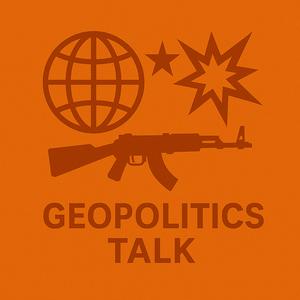
Get the free radio.net app
- Stations and podcasts to bookmark
- Stream via Wi-Fi or Bluetooth
- Supports Carplay & Android Auto
- Many other app features
Get the free radio.net app
- Stations and podcasts to bookmark
- Stream via Wi-Fi or Bluetooth
- Supports Carplay & Android Auto
- Many other app features


Geopolitics Talk – The Podcast
download the app,
start listening.
